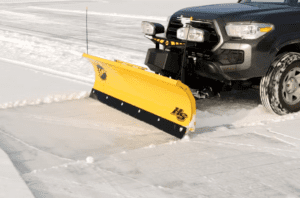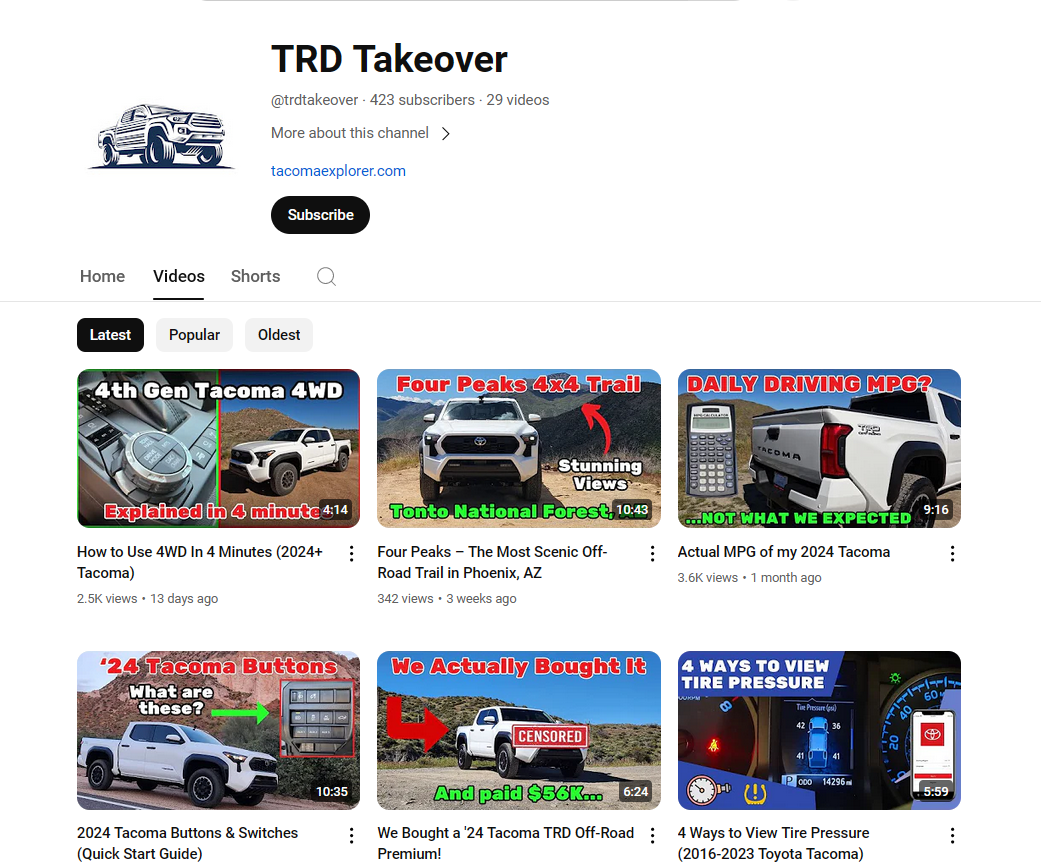Toyota Tacoma Flatbed (Kits, Photos, and More)
A flatbed can be a useful overhaul for those looking to make cargo hauling easier and expand the versatility of their Tacoma.

Key Points:
- A flatbed has no walls or roof and can easily be loaded with cargo.
- A flatbed offers benefits for cargo carrying, customization, maintenance, and off-roading.
- A flatbed may add weight to the truck, has limited aftermarket support, and can be expensive to build/install.
There are many reasons why Toyota Tacoma owners may want to turn their truck into a flatbed, but is the conversion difficult and costly? The Toyota Tacoma flatbed is an excellent option for Taco owners hauling bulky items or needing easier loading.
This guide covers the pros and cons of adding a flatbed to the Tacoma and evaluates the cost. We’ve included some images to inspire you and have recommended some kits worth considering.
What Is a Flatbed?
Unlike a standard pickup truck, a flatbed provides an open bed that can be easily loaded with cargo as there are no walls or a roof to get in the way.
You may not know that the very first Toyota truck, the 1935 G1, was a drop-side flatbed. In a way, you are honoring this original design by installing a flatbed on your Tacoma.
Photos
Curious about what a flatbed looks like on a Tacoma? These images will help you see the beauty and utility of a flatbed Taco.






Pros and Cons
Are you considering a flatbed conversion? What reasons do you have? Are you using the truck around the farm to make loading more accessible, or are you seeking to improve it for overlanding? These are good reasons to consider the Tacoma flatbed conversion, but there are pros and cons for you to consider before making the decision.
Pros:
- Able to carry larger loads – no restrictive walls to contend with
- More effortless loading and unloading of cargo
- Less maintenance of the body is required
- Completely customizable
- Replacement for damaged stock bed
- Improve departure angle
Cons:
- Easier to overload the truck
- Increased chance of an accident if cargo falls off the flatbed
- Higher insurance premiums
- Adds weight to the truck
- Can be heavier than a Standard Bed
- Not a lot of aftermarket support is available
- Increased cost
In addition to these pros and cons, you must determine how much work and cost are involved. You can go full DIY on the flatbed to reduce costs, but then you have increased time in the project. There are also partial kits available for a balance of cost and time, or you can pay for complete flatbed construction and reduce the stress on yourself.
Cost
Because there are so many different ways to install a flatbed on the Taco, giving you an average cost can be challenging. For example, if you can do all the welding and purchase the flatbed with a headache rack, you may only spend around $750.
On the other end of the spectrum, this Toyota mod can quickly run into several thousand, especially if you aren’t performing any of the labor. Adding a canopy is also going to increase the price.
We recommend several things to consider. First, you may want to offset some of the cost by selling the OEM bed before upgrading. You have extra cash for the purchase and modification by lining up a buyer beforehand.
Additionally, there’s the option to purchase a Tacoma that’s already converted. However, they aren’t easy to find.
While it seems that plenty of people are upgrading the Taco to include a flatbed, these same people aren’t selling their trucks. Can you blame them? After that investment, it would be difficult to part with the truck.
Where to Buy
We’ve assembled several options for when you are ready to convert your Tacoma to a flatbed. The complete DIY approach is where you weld and manufacture the bed on your own.
You can also choose a conversion kit or buy a pre-built flatbed Tacoma. Let’s examine some of these options closer.
Flatbed Kit
You have several options if you want a kit that makes it easy to convert the Tacoma to a flatbed. Here are some kits we think are worth considering.
Summit Expedition Trucks
This company is based out of Alberta, Canada. It is a proud Specialty Equipment Market Association (SEMA) member, so you know the modifications will be top-notch. Tacoma flatbed kits are available for all models.
Summit Expedition Trucks does take three to four months to deliver the equipment, so that’s something to keep in mind. Additionally, the installation can take eight to ten hours (with the help of a friend).
SHERPTEK
Another option is SHERPTEK, which offers a 6′ flatbed that’s 75″ wide. This flatbed can be outfitted with front mini skirts, rear boxes or marine decking. Plus, there’s no weight gain over the stock 5′ bed. You can easily install this flatbed on the 5′ or 6′ stock bed.
Furthermore, if you want to modify the bed for camping, it’s not difficult to do. The company suggests adding flank sides, hips, custom tie-down brackets, and electrical connections.
CM Truck Beds
This company is based in Oklahoma and specializes in the aluminum truck bed. CM Truck Beds also offers steel beds as well.
Aluminum truck beds are easier to maintain and weigh less. Yet they provide plenty of durability, even in demanding work environments. Furthermore, the bed doesn’t rust.
EBY
EBY supplies the Big Country truck bed, perfect for your modifications. Because it’s manufactured from aluminum, it will always look sleek and stylish, providing the support you need for the most challenging jobs.
There are several options available with this flatbed. You can add toolboxes and bumper steps for even more customization.
Pre Built Flatbed
There’s also the option to purchase a Tacoma with a flatbed already installed. When we tried to do this, we found it would be an arduous process. To put it nicely, the only flatbed Tacos we could find were older, well-used trucks.
However, there’s always the chance that you get lucky and find what you are looking for. Who knows, maybe you will start building and selling, seeing that it’s challenging to find new or late-model Tacoma trucks with a flatbed.
Consider browsing automotive marketplace sites like Autotrader or even reach out to flatbed Tacoma owners directly to see if they’re interested in selling their truck.
What People Are Saying
What do enthusiasts think about the flatbed Tacoma? Let’s read some comments on the Tacoma World forum.
User Calamity_Taco says, “Personally, I’d love to get a flatbed. My bed is already damaged by a tree that I hit. But the cost keeps me from doing it unless I make it myself.”
User Tacoma16 says, “I am very pleased with its strength, extra room, and overall versatility. The downside is there isn’t a tailgate, so getting in and out of it is a bit tough (I don’t have the stock bumper as a step), and the tailgate is nice to use as a table. For me, it was worth the money.”
For most people, the modification comes down to money and time. More people would jump in if these two factors didn’t exist.
Frequently Asked Questions
Related Content
What Work Do You Want To Get Done?
Whether farming or working in construction, the Taco flatbed offers many options. You can get a whole lot more done with this handy modification.
However, there’s a lot of work to do before you can load up the flatbed. Before modifying your truck, consider the installation time and costs.
From our personal experiences and the information we collected, here are our recommendations:
Farm and Business Use
We’d suggest a steel bed for these applications. While heavier than aluminum, steel is also more robust. Appearance isn’t an issue in these applications, so should corrosion appear, it can be handled swiftly with a wire brush and a can of paint.
Overlanding
We’d recommend an aluminum or wood bed for those considering converting their Tacoma into a flatbed for overlanding. The lower weight of aluminum can allow more load to be carried than steel, and it’s also more attractive.




